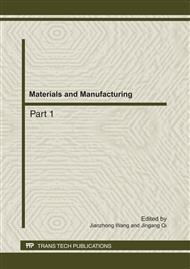p.806
p.810
p.816
p.820
p.824
p.828
p.832
p.836
p.840
Effect of Milling Time on the Properties of Nanocrystalline CuCr50 Alloys
Abstract:
Nanocrystalline CuCr50 alloys were fabricated by means of mechanical alloying and spark plasma sintering. The influence of milling time on the as-milled powders and properties of sintered compacts were investigated. The results show that crystallite size of powders decreases gradually with increase of milling time, while the micro-strain increases firstly then decreases correspondingly. The crystallite size is 22 nm at milling 100h.The micro-hardness of the compacts improves greatly with the increase of milling time, reaching 363HV at 150h which is about 3 times as high as that of the industrial standard (120HV), while the electrical conductivity improves gradually decline. The bulk nanocrystalline CuCr50 alloys sintered at 900°C for 5min exhibit high relative density of 96% and uniform microstructure: nanoparticles Cr with size of about 120nm are uniformly dispersed in the matrix.
Info:
Periodical:
Pages:
824-827
Citation:
Online since:
July 2011
Authors:
Price:
Сopyright:
© 2011 Trans Tech Publications Ltd. All Rights Reserved
Share:
Citation:


